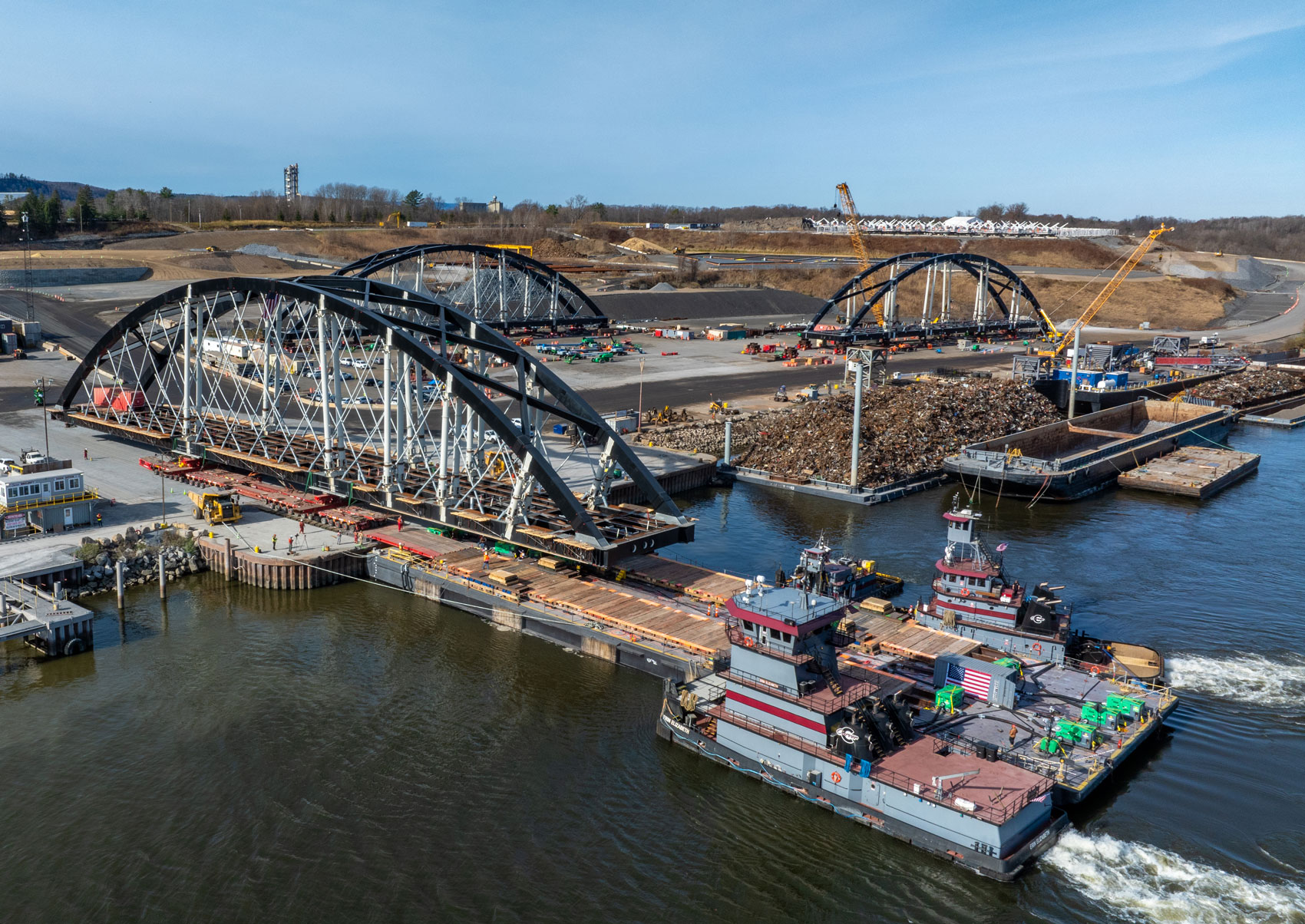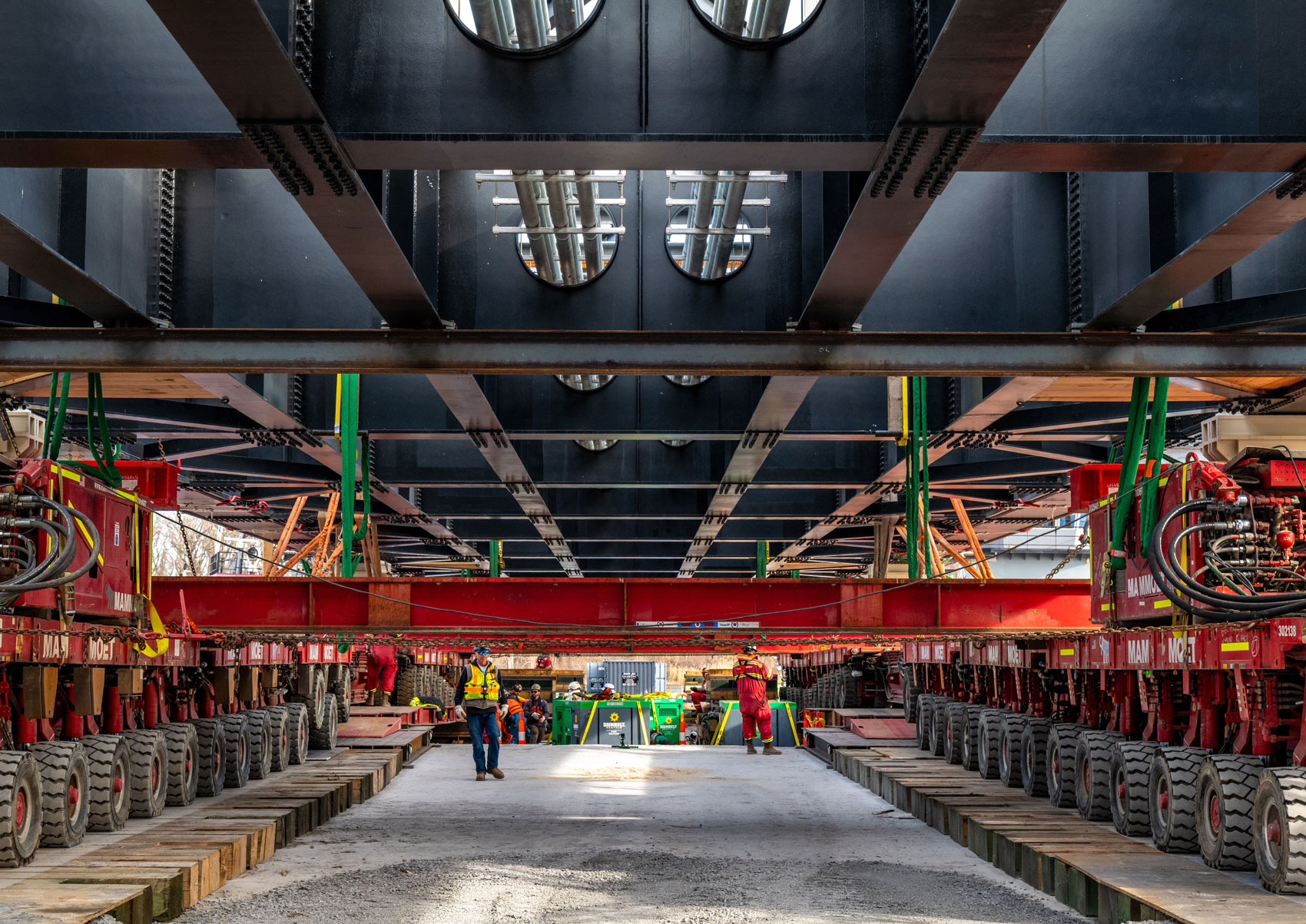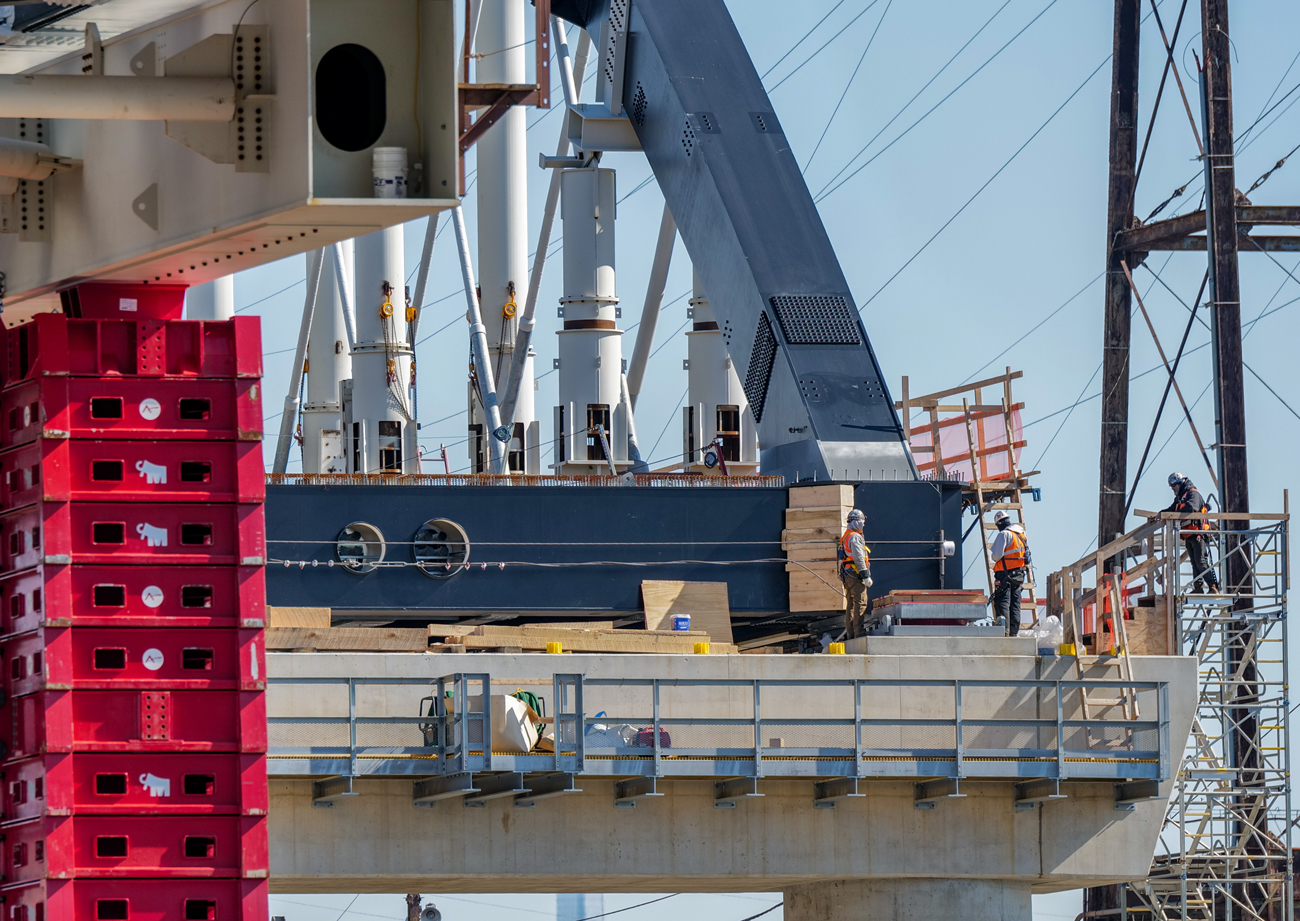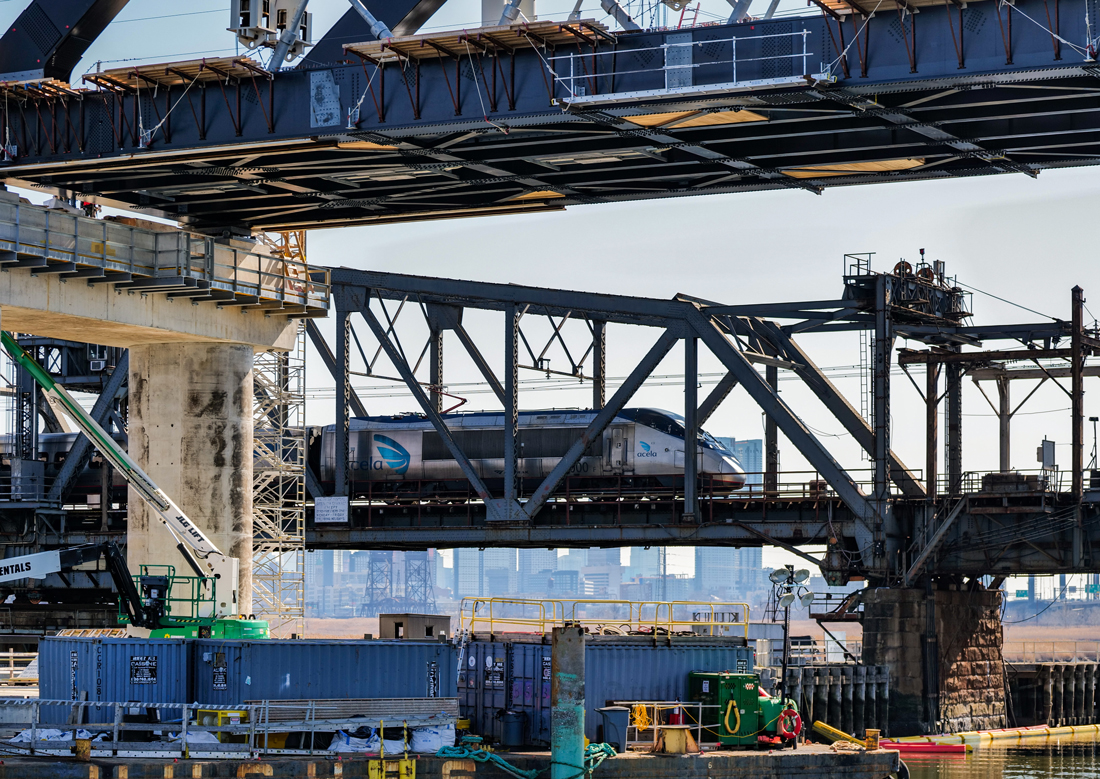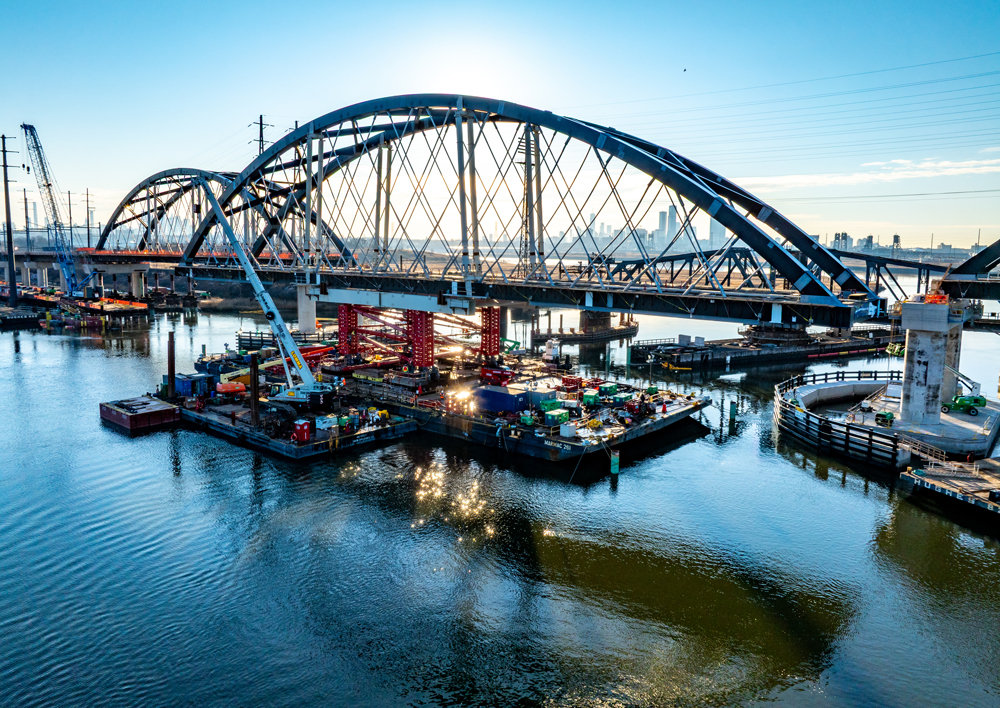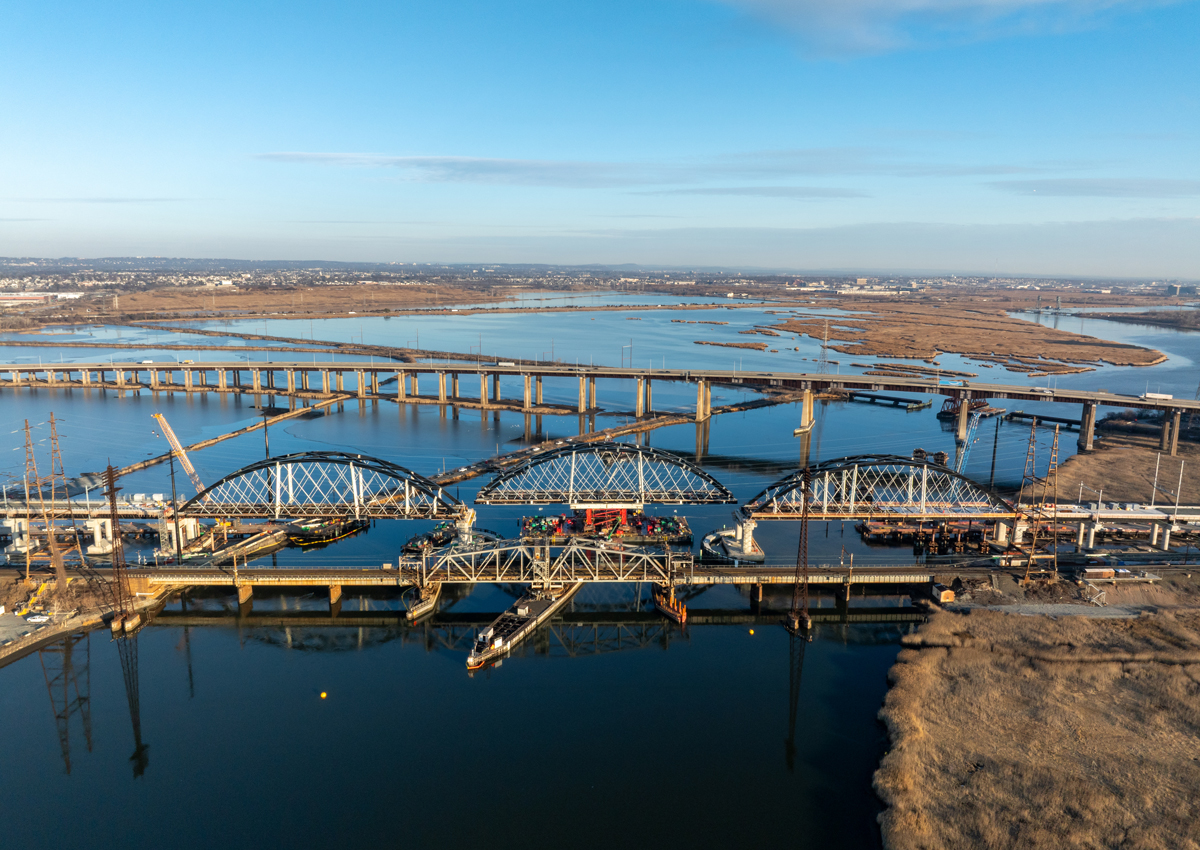The Portal North Bridge project, also known as the Portal Bridge Capacity Enhancement (PBCE) project, is a key rail bridge replacement near Secaucus, New Jersey. The infrastructure initiative will enhance one of the United States' busiest passenger rail corridors that links New Jersey and New York.
The project replaces the century-old Portal Bridge, a movable swing span originally built in 1910 by The Pennsylvania Railroad Company.
The new Portal North Bridge will be a fixed-span, two-track bridge rising 50 feet above the Hackensack River. It will be one of the first network tied arch rail bridges in the United States and will eliminate the need for movable components, reducing the risk of operational disruptions. Spanning nearly 2.5 miles, the bridge replacement will:
- Remove conflicts with maritime traffic
- Boost reliability and safety
- Enable higher train speeds
- Increase rail capacity
HNTB, as part of a tri-venture, was selected by NJ Transit and Amtrak to provide preliminary design, final design and construction phase engineering services for the project. HNTB’s primary initiative as the lead structural firm is the design of the new river bridge and portions of the associated approach spans and retaining walls over the Hackensack River in the New Jersey Meadowlands.
The Portal North Bridge is a cornerstone of Amtrak’s broader Gateway Program, a planned expansion and renovation of the Northeast Corridor rail line that will eventually double rail capacity between Newark and New York.
Location: New Jersey
Client: NJ Transit; Amtrak
Services: Lead structural engineer; preliminary design; final design; construction phase engineering
